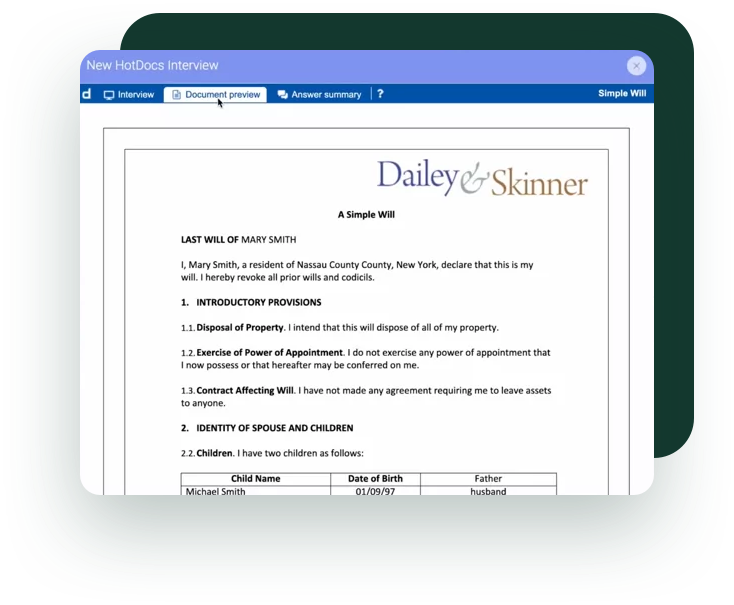An end of representation letter serves as a professional and ethical marker to indicate the end of a specific attorney-client relationship.
Every journey has a beginning and an end. When closing a case, it’s important to formally tell the client the end of the representation with a closing letter to the client from the attorney. That’s where the importance of a closing letter to a client from an attorney, or closing letter to a client, comes into play. It’s a professional and ethical marker to end a specific attorney-client relationship. This letter is crucial in clarifying when the attorney client relationship ends.
Understanding the Attorney Client Relationship
The attorney-client relationship is a cornerstone of the legal profession, built on a foundation of trust, confidentiality, and loyalty. This fiduciary relationship means that an attorney is obligated to act in the best interests of their client, providing sound legal advice and representation. In return, clients are expected to provide accurate and complete information, enabling their attorney to offer effective legal counsel.
Governed by strict rules of professional conduct, the attorney-client relationship requires attorneys to maintain confidentiality, avoid conflicts of interest, and deliver competent representation. These ethical obligations ensure that clients receive the highest standard of legal services.
However, like any professional relationship, the attorney-client relationship can come to an end. Whether due to the conclusion of a legal matter or other reasons, it is crucial to terminate this relationship formally and professionally. A termination letter or agreement serves as clear documentation of the end of the relationship, ensuring a smooth transition and minimizing potential disputes.
What is a Termination of Attorney Client Relationship Letter?
A termination of representation, or closing letter, is a formal document an attorney sends to their client to mark the end of their representation on a specific matter. This letter is part of the attorney-client relationship and provides clear documentation of the case’s end and avoids any confusion.
If a client decides to terminate their attorney before a court hearing, they may need to file a motion for continuance to postpone the court hearing, allowing time to hire a new lawyer. This decision can have both legal and financial repercussions.
When to Terminate a Lawyer Client Relationship
Deciding to terminate a lawyer-client relationship can be challenging, but sometimes it is necessary. If you are dissatisfied with your attorney’s performance or feel they are not acting in your best interests, it may be time to consider ending the relationship. Other reasons for termination might include a conflict of interest, a breakdown in communication, or a change in your legal needs.
Before making this decision, it is essential to weigh the potential consequences, such as the impact on your case and any financial implications. Seeking a second opinion or consulting with another attorney can provide valuable insights and help determine the best course of action.
If you decide to terminate the relationship, doing so in a formal and professional manner is crucial. A termination letter or agreement will help ensure a smooth transition and minimize potential disputes. Additionally, reviewing your attorney’s engagement letter or contract can clarify your obligations and any potential penalties for termination.
More Than Just a Formality
It may seem like a formality but an end of representation letter carries weight in the legal world. It does several important things from providing a formal record of the end of a specific attorney-client relationship to preventing miscommunication. Here are some of the reasons why closing letters to clients are essential:
- Clear Documentation: It provides a formal record of the end of a specific attorney-client relationship which can be useful for future reference.
- Avoids Miscommunication: It prevents a client from thinking you’re still representing them.
- Client-Centered Experience: It ensures clients aren’t left in the dark about their case so they have a better experience.
- Future Representation: Although it ends a specific case, this letter doesn’t mean the end of your professional relationship with the client. It leaves room for future representation.
For clients needing to formally end their legal representation, we also provide a sample termination letter to guide them through the process.
7 Ways Document Automation Can Boost Your Business
Learn how document automation can impact your law firm’s bottom line in essential areas of case and practice management.

7 Ways Document Automation Can Help Your Business
Learn how document automation can impact your law firm’s bottom line in key areas of case and practice management.
Professional Communication
Writing an end of representation letter isn’t just about getting it done. It’s about doing it right. The way you communicate the end of your legal services can reflect on your professionalism and can impact your relationship with the client. An attorney representation letter plays a crucial role in legal communications by notifying interested parties that an individual is represented by legal counsel, establishing attorney-client relationships, handling communications with the opposing party, and providing a brief summary of case facts.
So how do you end an attorney letter to a client? Follow these best practices to ensure your letter is clear, concise and consistent:
- Timeliness and Consistency: Send the letter as soon as the case is over and make it a habit to send a closing letter to clients after every case. This shows respect for your client’s time, keeps them informed and establishes your reputation as a reliable and professional legal service provider.
- Clarity, Conciseness and Personalization: Make sure your letter is easy to read and understand. Clear and concise communication combined with a personal touch can build trust, make clients feel valued and improve their experience.
- Positive Language and Appreciation: Use positive language to end your representation and express gratitude to the client. This can leave your clients with a good impression of your services and increase the chances they’ll return or refer your services to others.
- Feedback Request and Follow-Up: Ask the client for feedback and consider following up with them after sending the closing letter. This shows you’re committed to improving your services and makes the clients feel their opinion matters. It can help you gain insights into your strengths and areas for improvement and guide your future client interactions.
The way you communicate the end of your legal services can reflect on your professionalism and can impact your relationship with the client.
Must-Haves
When writing an end of representation letter, make sure to include:
- Case Specifics and Status: Clearly state which case you’re referring to—especially if there are multiple matters at hand or if you take on future matters for the client. List the case number and briefly describe the case in the body of the letter. Also, note the matter is closed or concluded.
- The Date: Date the letter and specify when the case is over.
- Reason for the End of Representation: Briefly state why you will no longer be representing the client on the matter at hand—whether it’s because the case is over or another reason (for example, if your practice is closing).
- Client Documents: Let the client know if you will be keeping case files and for how long. If you’re returning original client documents with the letter, state that in the letter and specify what’s enclosed.
- Next Steps: If applicable, list any actions or next steps the client needs to take care of or is responsible for. This could include a note about the final bill for the matter.
- Feedback Request: Client feedback is key to good client communication and your law firm’s success, so ask for it. This could be as simple as including a feedback questionnaire.
- Note of Appreciation: Thank the client for the opportunity to represent them. Ending the letter on a positive note goes a long way to making a client feel valued.
- Sample Attorney Representation Letter: Provide a sample attorney representation letter to guide clients in drafting their own letters. This sample can illustrate the format and content used in legal communications, such as notifying an insurance company about a client’s representation after a car accident, detailing the incident, the client’s injuries, and requesting further information about the insurance policy.
Sample Termination Letter Template
Here’s an example:
Re: Termination of Representation, Case/File #[Case Number]
Dear [Client’s Name],
Subject: Case Closed – [Legal Matter)
I hope this letter finds you well.
I am pleased to inform you that our services for the [brief description of the legal matter] are now complete as of [date]. This follows the conclusion of the matter which we discussed on [date of discussion].
First and foremost, thank you for choosing our law firm. It has been our pleasure to serve you and we appreciate the trust you have placed in us. You have been a great client.
As we move forward, please note any subsequent legal issues related to this matter or new legal matters will require a new agreement for our services. If you need further legal assistance, we’re here for you. We look forward to serving you again.
We will be keeping all your files related to this matter in our office for [number of years as per the firm’s policy or legal requirement]. After that, the files will be shredded. If you want the original files, please let us know within [time period] and we’ll arrange for their return to you.We always strive to improve and your feedback is important to us. Please take a minute to let us know about your experience with our firm by completing this short survey [link to survey]. Your input will help us fine tune our services.
In any case, thank you again for the opportunity to represent you. We value the relationship we have with you and look forward to it continuing.
If you have any questions or need further clarification on this matter, please reach out to us.
*Best regards,
[Your Name] [Your Law Firm’s Name]
Automate End Of Representation Letters
Writing closing letters can be a chore, especially when managing multiple cases. That’s where document automation comes in, a solution to this problem. Consider using our practice management software that can convert your existing documents into reusable templates and speed up the process of writing closing letters.
The new attorney represents the client in all legal matters moving forward, ensuring that all relevant communications are directed to the attorney instead of the client.
One of the benefits of document automation is consistency in every letter. This consistency not only enhances your professional image but also builds trust with your clients.
Legal workflow automation can also automatically remind attorneys to send the letter when the case is marked as closed so no important communication is missed.
Turn an end of representation letter into a template that can be used again and again using document automation
Document automation saves you time by generating letters quickly and easily. That means you can send out closing letters faster, respect your clients’ time and improve their overall experience and avoid any confusion that can arise from miscommunication and strengthen your client relationships.

Turn an end of representation letter into a template that can be used over and over again using document automation
With less time spent on administrative tasks, you can focus more on your clients and deliver your legal services smoothly and efficiently. Document automation makes you more professional and helps in client satisfaction by ensuring clear, consistent and timely communication. This is a key factor in client retention, reviews and referrals.
Seeking New Representation and Follow-up
After terminating your attorney-client relationship, it is vital to seek new representation promptly to protect your rights. Start by researching and interviewing potential attorneys to find one who is experienced and qualified to handle your case. Open and honest communication with your new attorney is essential, as they will need all relevant information and documentation to provide effective legal representation.
Your new attorney will review your case file and familiarize themselves with your situation, so providing comprehensive information is crucial. Regular follow-up with your new attorney ensures that your case progresses as expected and that you remain informed and involved throughout the process.
Establishing clear communication channels and expectations with your new attorney is key to a successful lawyer-client relationship. By actively engaging and staying informed, you can work with your new attorney to develop a strategy and plan for your case, ensuring it is handled effectively and efficiently. This proactive approach helps protect your rights and achieve the best possible outcome for your legal matter.
Perfect Your Closing
Drafting a termination of representation letter is an integral part of finalizing a legal matter. It doesn’t just offer transparent documentation but also improves the client’s journey by eliminating ambiguity. Yet, it can be a lengthy process. Clear documentation is especially crucial in a personal injury case to protect the client’s interests and ensure proper communication.
If you’re ready to reclaim your time and streamline your case management, it’s time to consider automating your closing letters.
Dive into the era of automation! Experience a demo of CARET Legal today.
